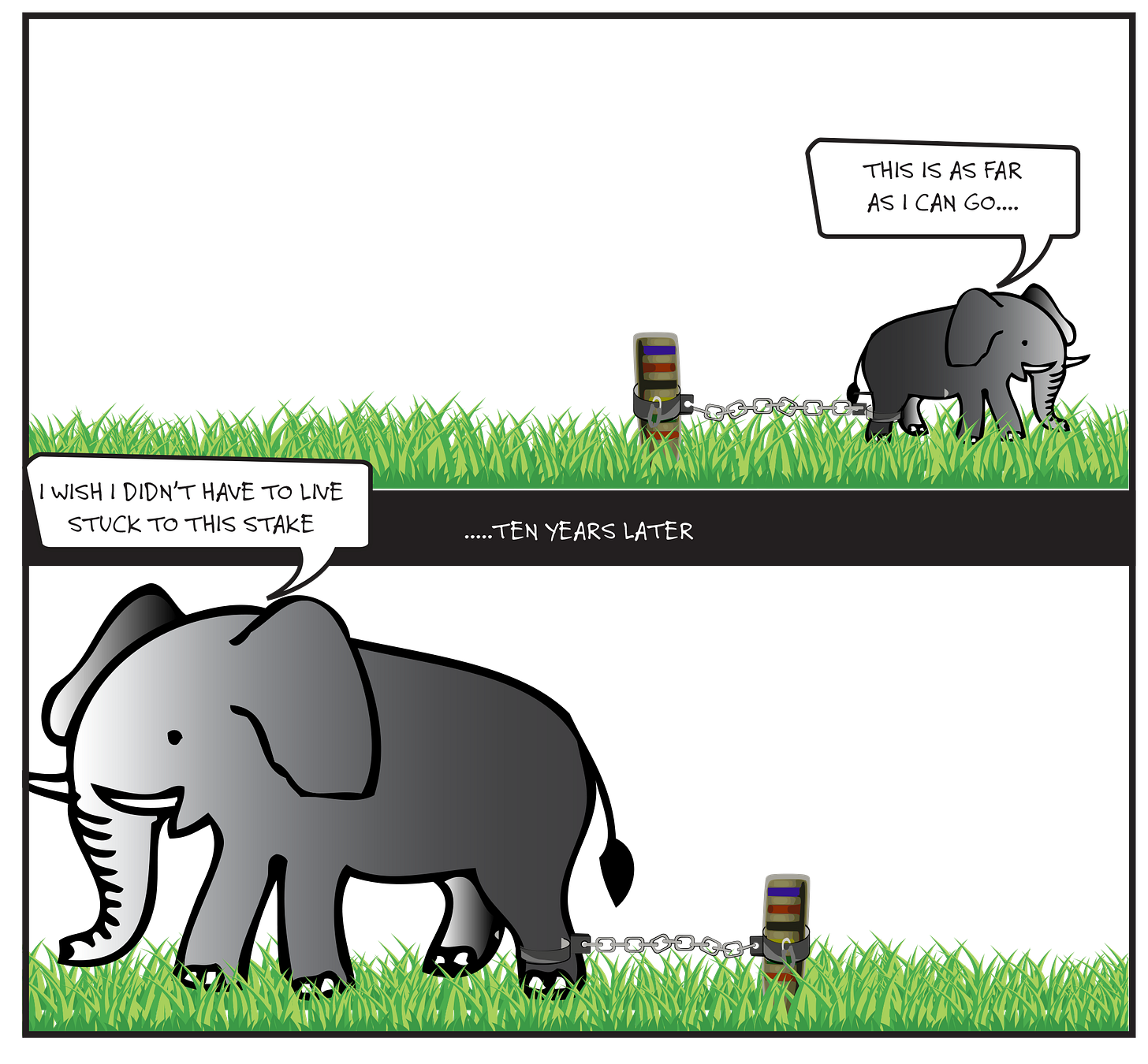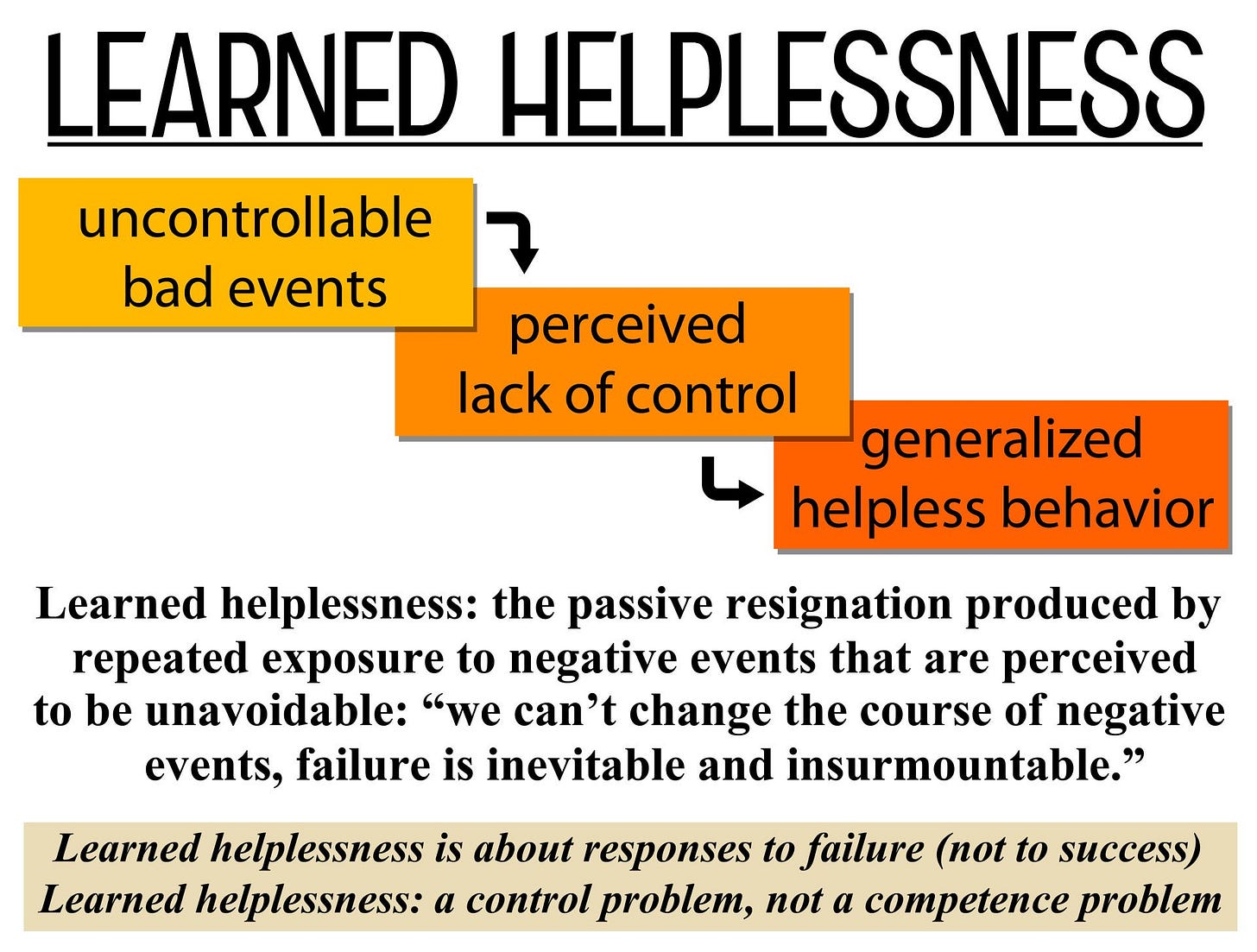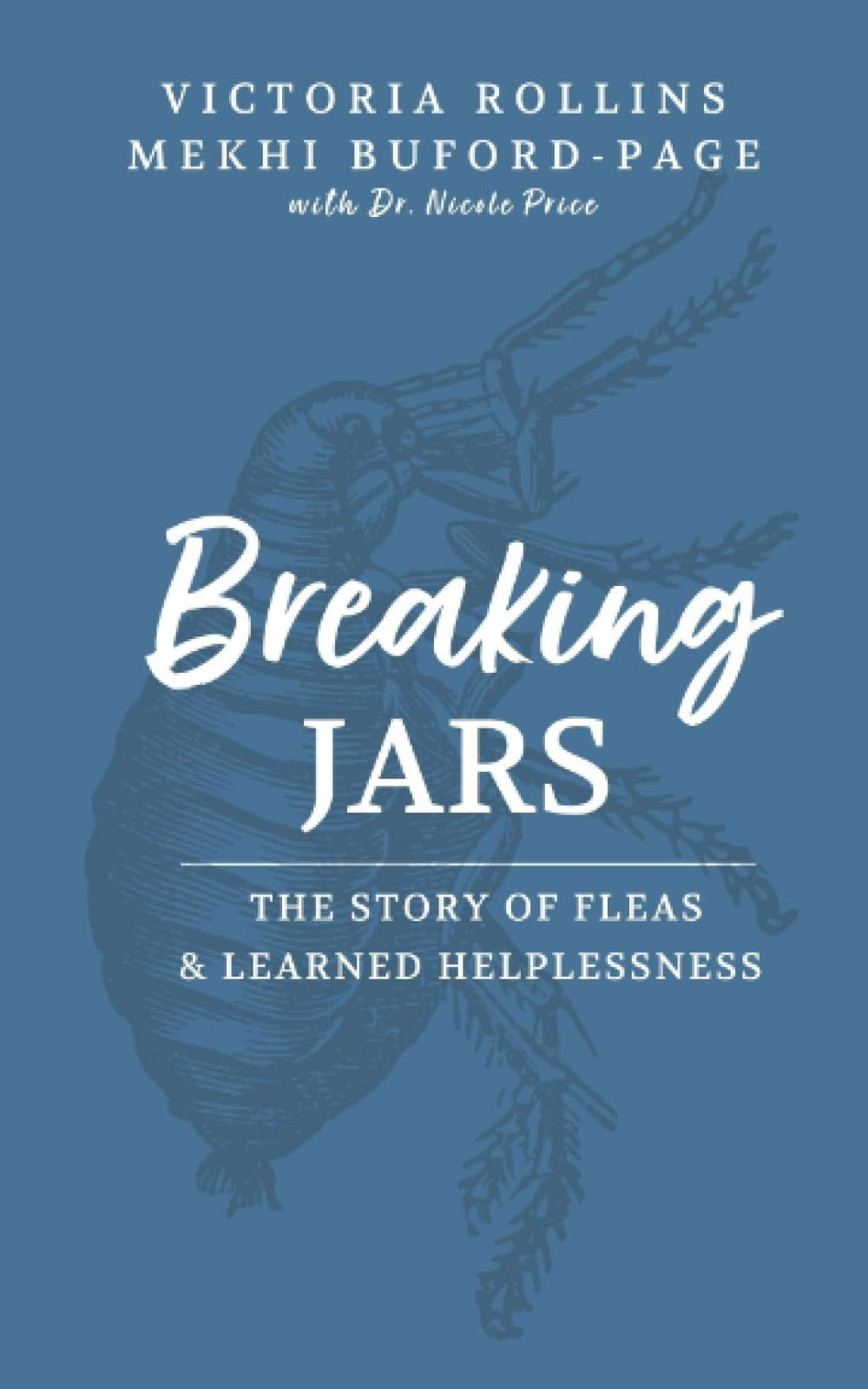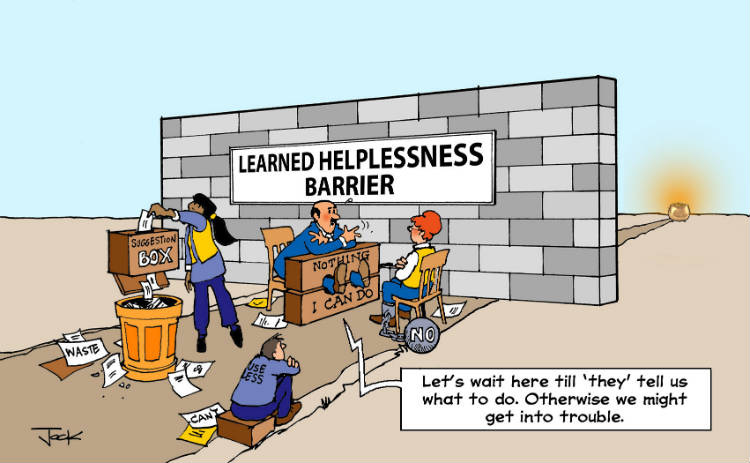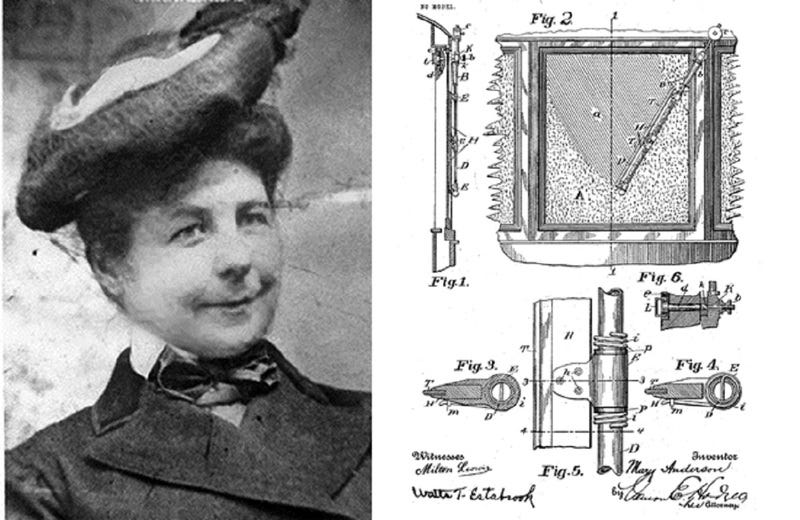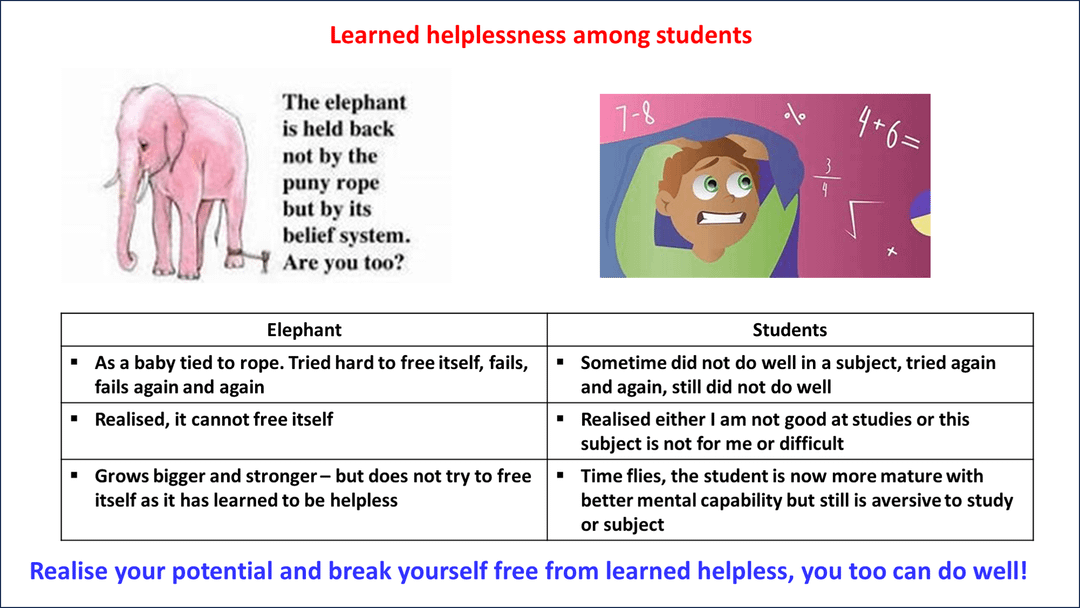#Business Analogy 034 - Learned Helplessness - Elephants bound by Grass - Zek & The Ant - Classical Conditioning - Ivan Pavlov - The Flea Trap - Tiger Cub & Goats - We Tried that Already
Learned helplessness is conditioned, it is taught - Religion teaches helplessness with the crutch of GOD - Employees are taught to depend on the salary as a drug to forget about their dreams -
INTRODUCTION
DILEMMA: WHO IS IN CONTROL?
Let’s start from the beginning, when someone disturbed my ego.
I was pursuing my Engineering, and some of the best minds across India were on the same campus. My friend, while taking a walk one day, asked me to show him my hand.
I showed him my palm and he read my palm and said, “You and your wife will have conflicts and an unhappy married life”.
I was not angered, but I was amused. “Interesting, which line in my hand makes you think that I would be fighting with my wife (which I did not have to this day)?” I said, but did not argue with him.
I did not dismiss him, and neither did I argue with him. I just wanted to understand his rationale for this conclusion. I was, am, and will be an analyst at heart.
“This is a secret science of palmistry, and it is only meant for the Brahmin caste and should not be imparted to others.” He said.
“Fuck You and Fuck your Caste. I will learn palmistry and will show you that if I wanted to learn something, nobody can stop me from doing it”, I said.
Years later, after graduating from college, I learned palmistry, reading multiple books and tutorials out of my own interest. It took me years to master the skill.
In another instance, at school, I learned the Hindi language when someone hurt my ego by refusing to teach me. Each time someone denied me the right to learn, it would ignite a rage in me.
How does it matter? You ask?
Yes, it does matter, not my ego, but Palmistry mattered, as it would bring me face to face with People, and in conversation, I would understand their psychology or their belief system with which they ran their lives.
When I started learned palmistry (Hasta Samudrika Shastram or the Science of Prints on hands), it came with a few disclaimers,
Don’t look at the palms of children
The lines change continuously, the smaller lines change every six months, and the bigger lines change every six years.
The lines don’t determine your fate; your lines are like footprints on the beach, you leave behind as you walk on the beach. The footprints don’t decide where you go. The lines only show what you have done so far.
I have seen the palms of tons of people. It is a nice party trick to make some predictions, a lot of them, and later realize that some of them worked out and others did not.
Either way, when I deal with people, I encounter two kinds of people:
Type 1 - those who believe that they are in control of their future (not lines on their hands), and they believe in themselves and their hard work.
Type 2 - Others who believe that their fate is predestined. God has decided everything for them, and they just have to go along with God’s Plan.
This is a dilemma: who is in control? Me or God? Who calls the shots? Is everything predetermined, or can we change our fate?
I am a staunch believer in human will and effort. But one should not underestimate the power of fate and luck in success and decision-making. In the long run, one should also understand that they got lucky. They might have just won the ovarian lottery. They were at the right place at the right time.
The Human Will or Fate/Luck? Which reigns supreme?
Where is the Locus of Control?
Is GOD a crutch for the Learned Helpless?
The dependence on God/Government to take care of things VS growing a spine to realize that “Nobody is going to take care of things, and I have to roll up my sleeves and get things done all by myself.”
Does religion and God teach you Learned Helplessness?
More importantly, who taught my friend that knowledge is only reserved for the Brahmin Caste? Is he trying to teach me that I am not worthy of learning knowledge? What if I accepted this premise and learned helplessness?
Let’s Explore.
ANALOGY
BINDING ELEPHANTS WITH GRASS
Before we can jump in and actually learn the formal Learned Helplessness, it is easier to understand it through an Indian Fable about Binding Elephants with Grass.
Yes, you heard that right, but how does one bind Elephants with a rope made of Grass?
By making the Elephant believe that the Grass is Stronger.
This can’t be done in an hour or a day or a month; it takes years of conditioning.
Here is how it is done.
It starts when they’re babies…
Chaining an elephant isn’t just about wrapping a piece of metal around its leg.
Try that with a grown wild elephant, and the chain wouldn’t last a second — it would snap like a twig, the elephant barely noticing.
The real trick begins much earlier. When the elephant is still a calf.
Back then, you didn’t even need heavy chains — just a thick rope is enough to hold a baby elephant (thus the reference to a grass rope).
The baby elephant will fight. It will pull, it will twist, it will try every ounce of its tiny strength. But the rope holds. And every attempt to resist leaves it with a stinging burn around its leg. Slowly, painfully, the elephant learns something deadly:
“This is pointless. Struggling only hurts.”
And so it stops. It accepts the rope as a law of nature, a boundary it can never cross.
Years pass. The calf grows into the largest, strongest land animal on earth. A creature capable of uprooting trees, toppling walls, and dragging trucks. Yet when the same rope or chain is tied around its leg, it doesn’t fight. It doesn’t even test it. Because in its mind, the chain is unbreakable.
The body grew.
The power multiplied.
But the mind stayed in the cage it built when it was small.
That’s how you chain an elephant.
ANECDOTE
ZEK & THE ANT
Amazingly, even ants can suffer from “learned helplessness.”
In “The Gulag Archipelago,” the Russian dissident writer Alexander Solzhenitsyn described watching a fellow prisoner torturing an ant while they were in a prison camp in the Gulag.
The prisoner, called Zek, found the ant at the bottom of his empty teacup. The ant was trying to crawl out, and when it reached the top, Zek gently knocked it back down to the bottom. The ant tried to crawl out again, and again, when it reached the top, Zek pushed it down.
The ant climbed up the side of the cup 182 times, and 182 times Zek pushed him back down.
Then the ant gave up. It never tried again to climb up the side of the cup. It simply sat at the bottom, occasionally wandering around, but never again trying to escape. Zek could even go away for a while and come back to find the ant still there.
It had given up any attempt to be free.
If Learned Helplessness could be taught to Elephants and Ants, it can definitely be taught to Humans. Here is a joke about learned helplessness in Humans.
JOKE
FORGOT HOW TO CLIMB STAIRS
🚨𝐓𝐡𝐞 𝐞𝐬𝐜𝐚𝐥𝐚𝐭𝐨𝐫 𝐬𝐭𝐨𝐩𝐩𝐞𝐝.
The man stood still and screamed, “Help! Help!”
Not because he couldn’t walk…
But because he forgot he could.
This is learned helplessness.
We stay stuck — not because we have no options, but because we’ve convinced ourselves we don’t.
📌 In careers
📌 In businesses
📌 In life
𝑻𝒉𝒆 𝒕𝒓𝒖𝒕𝒉?
𝘠𝘰𝘶’𝘳𝘦 𝘯𝘰𝘵 𝘴𝘵𝘶𝘤𝘬. 𝘠𝘰𝘶’𝘳𝘦 𝘫𝘶𝘴𝘵 𝘸𝘢𝘪𝘵𝘪𝘯𝘨 𝘰𝘯 𝘩𝘦𝘭𝘱 𝘵𝘩𝘢𝘵 𝘪𝘴𝘯’𝘵 𝘤𝘰𝘮𝘪𝘯𝘨.
SOURCE: People with Learned Helplessness
We have seen learned helplessness across various species, Elephants, Ants, and Humans.
But the causes of helplessness have always been artificial in all these cases, i.e., someone created these situations, but it need not always be the case.
Now that we have seen a few analogies about Learned Helplessness, it is time to formally define Learned Helplessness.
CONCEPT
Learned Helplessness
Learned helplessness is giving up and believing that effort is futile.
Learned helplessness is a psychological state where an individual feels powerless and stops trying to change their situation after repeated experiences with uncontrollable, stressful events. This mindset leads to a belief that their actions are futile, causing passivity, lack of motivation, and a failure to take action even when opportunities to escape or change circumstances become available.
The phenomenon of learned helplessness was first documented by American psychologists Steven F. Maier and Martin E. P. Seligman.
In their classic experiments, dogs were exposed to mild electric shocks under two different conditions. Escape and Non-Escape Groups
Some dogs were put into chambers where they received electric shocks. For one group — the “non-escape” condition — there was no way out. No lever, no switch, no action they could take to end the pain. The shocks came, and all they could do was endure.
For the other group, there was an escape. A panel they could nudge with their nose. With a bit of effort, the current would stop. They discovered: “If I act, I can change my fate.”
The first group learned despair.
The second group learned agency.
But the real revelation came in phase two. The dogs were moved to a new setup: a shuttle box with two sides, divided by a low barrier. The rules were simple: when the shock came, all you had to do was jump the partition, and safety was right there.
What happened was astonishing.
The dogs who had once been given control jumped. They saved themselves.
The dogs who had learned there was no escape? They didn’t even try. They just lay down, whimpered, and absorbed the shocks as if fate had already been sealed.
It wasn’t that they were weaker.
It wasn’t that the barrier was too high.
It wasn’t even that they didn’t notice the possibility.
The experiment showed that repeated exposure to uncontrollable aversive events can teach animals to stop trying even when escape becomes possible. This learned passivity — later generalized to humans — is the core of what we now call learned helplessness.
They had learned helplessness.
Watch this video to get a full idea about their experiments
SOURCE - SPROUTS - LEARNED HELPLESSNESS
Seligman saw this wasn’t just about dogs. It was about people, too. Once you convince a being that effort is meaningless, they stop trying — even when freedom is right there.
Now, if this story feels familiar, that’s because another scientist had done something similar decades earlier.
Ivan Pavlov, the Russian physiologist, had created his famous theory of Classical Conditioning. His dogs learned to salivate at the sound of a bell, because the bell always preceded food. Pavlov conditioned them with a positive stimulus — the promise of reward.
Seligman, by contrast, was conditioned with a negative one. His dogs weren’t taught hunger or craving, but resignation. After repeated failures, after bumping into walls of futility, they stopped believing in the possibility of escape. They learned to accept misery as their permanent state.
Pavlov used the carrot.
Seligman used the stick.
Pavlov conditioned desire.
Seligman conditioned despair.
And both showed us the same truth:
Behavior can be taught, reinforced, and — most dangerously — learned into submission.
Both showed how easily behavior can be written into us. And once written, it doesn’t fade.
The elephant accepts the rope.
The believer accepts fate.
The dog accepts the shock.
The chains that matter most are never on the body.
They’re on the mind.
Learned helplessness can sometimes happen due to an accident or circumstance, and not carefully taught for gain or malicious intent.
Here is a story from the tales and parables told by Sri Ramakrishna.
PARABLE
THE TIGER CUB AND THE GOATS
A she-tiger died giving birth.
Wild goats found the cub and cared for him.
The cub ate grass like the goats, bleated like the goats, and thought he really was a goat.
A tiger then attacked the goats and found the cub. “Why are you eating grass? Why are you bleating?” he asked.
“That’s what goats do,” replied the cub.
“But you’re a tiger!” he said.
Then he took the cub to a pond. “Look: that’s your face! That’s you!”
Thus, the big tiger became a teacher to the cub, who finally learned how to be a tiger after all.
Due to accidental conditioning, the Tiger cub grew up believing that it was a Goat, and it was really difficult for the older Tiger to convince him otherwise.
Another Variant of Learned Helplessness can be carried to the next generation. If one generation is subject to conditioning, interestingly, they seem to transfer this handicap or helplessness to the next generation, either by force through culture or by genes.
SHORT STORY / ADVERTISEMENT
THE FLEA TRAP
Here is an ad placed by PlayStation 2 about imaginary lids and invisible ceilings in the UK in 2001, titled FLEA CIRCUS.
Training fleas requires a glass jar with a lid.
The fleas are placed inside the jar, and the lid is then sealed. They are left undisturbed for three days.
Then, when the jar is opened, the fleas will not jump out. In fact, the fleas will never jump higher than the levels set by the lid.
Their behavior is now set for the rest of their lives, and when these fleas reproduce, their offspring will automatically follow their example
SOURCE - Fleas in a Jar experiment (2001) “Flea Circus” PlayStation 2 Ad
DISCLAIMER - This is more of an urban myth created to illustrate learned helplessness; in the real world, the flea circus or the jumping fleas is not possible.
If you wish to read this in a book i.e., The Story of Fleas and learned helplessness, you can read the book below.
Buy here. -https://www.amazon.com/Breaking-Jars-Story-Learned-Helplessness/dp/B0C8R79PW2
But this is the kind of glass ceiling that kept millions of Indias away from knowledge for generations, in the four caste system only the brahmins were allowed to learn, while the other castes were deprived of the much needed knowledge and thus majority of India was illiterate and remaind in dark ages, the much needed rennaisance and Industrial revolution could not take place in India due to the Malicious Flea Trap perpetrated by the varna system across generations left 80 - 90 percent of Indians away from education.
Now that we have seen all the mutations of learned helplessness.
Let’s check out how Religion, Business and others teach helplessness across generations.
CONCEPT
“GET EM WHILE THEY’RE YOUNG”
This is the very same mechanism religion uses to bind you.
The indoctrination doesn’t begin in adulthood — it starts right from childhood, when you’re most helpless, most impressionable.
You’re taught that there is a God. You’re taught that this God controls everything. Omniscient & Omnipresent, and all-knowing God.
And you’re taught that resistance is futile.
The message seeps in early: “If God wills it, it will happen. If God doesn’t will it, no amount of effort on your part will change the outcome.” (May God Will it) is the catchphrase often used.
Just like the rope that burned the calf’s leg, this idea burns into your mind until you stop struggling against it.
So you grow up, go to the best schools, read the finest books, sharpen your intellect, and become capable of thinking like the greatest minds. You may evolve in knowledge, in confidence, in skill. But the chain planted in your childhood still clings to you.
The logic repeats in your head:
“Why fight God’s will? Why put in effort when God’s script is already written?”
And so the mechanism completes itself.
Religion has taught you helplessness. God becomes the locus of control, the invisible chain.
You no longer feel fully responsible for your life.
Failures? They were God’s will. Successes? Also God’s will.
Responsibility dissolves into devotion, accountability evaporates into prayer.
And when you stop trying, stop pushing boundaries, stop daring to create something new — it isn’t laziness. It’s obedience. After all, who are you to go against the will of God?
That’s how the strongest of minds, the brightest of intellects, can remain bound by the softest of ropes — the belief instilled when they were small.
That is learned helplessness, dressed up as faith.
This Learned Helplessness has descended our Civilization into the Dark Ages for Generations.
Learned Helplessness or Teaching Helplessness acts as a great barrier for Innovation.
We will now try to understand why Learned helplessness can be a great barrier to Innovation, OR how Big companies kill Innovation by Teaching Helplessness with their motto, “We Tried that Already.” It didn’t work back then, and so it won’t work now, and don’t bother trying again.
With this thought experiment.
THROUGHT EXPERIMENT
VIDEO CALLING APP IDEA
The year is 2011, and you are working at DISCO as a VP of Engineering. You are at the top of the food chain. Actually, you belong to another company, MEBEX, that DISCO acquired in 2007, and that is how you got into DISCO.
You pushed for an initiative to rebuild MebEx for a simpler, mobile-first video experience. But your idea was shot down as it was too far afield from DISCO’s established enterprise focus.
xoom’s mission statement is remarkably simple and straightforward:
“Make video communications frictionless.”
Frustrated, you left DISCO to start your own company, XOOM, in 2011.
Your vision is a simpler, mobile-friendly video product that would be tiny, fast, and easy for regular people to use — not just IT buyers.
It took 10 years for your vision to be realized. A 10-year overnight success.
COVID-19 pushed everyone indoors, and the demand for web apps shot up, and remote work took off. Xoom’s daily meeting participants jumped from 10 million to 200 million, a 20x rise in a matter of 3 months from Dec 2019 to Mar 2020, and to 300 million in a 100 million rise next month. Your servers are barely able to keep up with the exponential rise in demand.
MEBEX also had 324 million users in March 2020.
COVID-19 was the tipping point, or the context switch. It was once believed that video conferencing was only for the office. After COVID, this has changed; normal folk, for the first time in history, felt the need to have video communications, and the easiest of them all to use was XOOM. MEBEX and other apps were built for the enterprise and had extremely complex UI.
After this, there was no turning back for XOOM. It literally wiped the floor with all the other enterprise apps, including MEBEX. XOOM has become a verb, like Xerox and Google. Let’s get into a XOOM call, they would say. Nobody ever said Let’s get into a MEBEX Call ever!
If anyone reading this case study is remotely tech savvy, they must realize that,
“YOU” are “Erik Yuan”, an early WebEx engineer, later VP of engineering at Cisco
You are the founder of ZOOM!
This is a cautionary tale for anyone who says, “We tried that already, it won’t work”.
What are the contexts/assumptions under which the idea was tried?
Have they changed? Will they change in the future?
As a thumb rule, if the idea has not been tried in the last 6 months to 1 year, the findings might not be relevant anymore, since the rate at which the world is changing is accelerating with each passing day. We need to revisit the idea and check if the learnings are still valid.
Beware of Been There, Done that, because “there” is not there anymore!
CONCLUSION
WE TRIED THAT ALREADY AS LEARNED HELPLESSNESS
Can Learned Helplessness happen in Corporate Settings?
Yes, it can, but it is expressed as “We tried it already,” and it did not work, so don’t even bother trying again.
Huge Corporations are masters of execution, which means that they are extremely careful about which ideas they are willing to chase, and they are extremely good at culling ideas that have very little chance of adding value or making money for the company. The Corporation is an extremely ruthless but efficient profit-chasing machine. It is a powerful bad idea killer. How does a corporation kill bad ideas?
There are many approaches to do it, but one of the most efficient methods is to keep track of all the ideas that were ever tried and failed, and compare new ideas with the existing failures. This will make sure that the corporation does not make the same mistake twice. This repository of failures is a critical database; usually, the elders in the organization have this at the top of their mind.
This phenomenon is adopted not just by corporations but by any legacy institution, for example, ants and bees have a technique to leave a negative trail telling others of their hive to stay away from that path and not waste their time/energy. These species engage in a form of chemical dialogue, marking territories already explored with a pheromone trail. You can’t argue with millions of years of evolution. But this natural strategy has its pitfalls.
Eventually, your failure repository would be so huge that no matter what idea you pitch, it has already been tried and wasted.
This is a unique situation, but it is possible in companies with huge legacy, i.e,. 100+ years or more of history will give 3 generations of employees to test out every idea under the sun in that domain and put a version of the failure in the database of failure repos.
In the corridors of corporate life, like many readers, I’ve experienced firsthand how the familiar phrase “We’ve tried that already and it didn’t work” can serve as both a shield and a sword. It’s a defence mechanism wielded by those fearing change, as well as an offensive strike against the rise of new ideas.
But here is the pitfall, the world of business is not static it is dynamic, the world keeps changing. Over time, as circumstances change and new information emerges, that original “snapshot” can quickly become outdated. Yet, too often, businesses cling to that first impression—rejecting innovations or new approaches with the excuse of “we tried that before,” without acknowledging that the conditions have shifted.
This notion echoes the ancient wisdom of Heraclitus, who remarked that “No man ever steps in the same river twice.” Just as the river is always in flux, so too is the context in which ideas develop and thrive.
Our understanding of facts is a mere snapshot in time—distorted by context. Many organisations dismiss new ideas with the refrain “we tried that already.” In reality, ideas may fail not because they’re inherently flawed but because of poor timing, a lack of customer insight, or an outdated context. Recognising this context bias and embracing fresh, untainted perspectives can help organisations overcome these barriers and unlock true innovation.
The COVID-19 pandemic exposed this phenomenon in many ways—numerous ideas were killed on the vine because they were judged against outdated benchmarks, while others suddenly found fertile ground.
X-X-X-X-X-X-X-X-X-X-X THE END OF ARTICLE X-X-X-X-X-X-X-X-X-X-X-X
This is the end of the article, but while doing research for this article, I encountered many concepts around Learned Helplessness; I could not simply throw them away. They are very interesting and useful too. But I can’t add all these concepts into the main article, so I stuffed them into the APPENDIX. For example, Jeff Bezos talk about the Window Wiper Analogy, which was extremely good to illustrate Learned Helplessness and how it acts as a barrier to Innovation, but I could not push it into the main article, since it is too long already.
APPENDIX A
WHY LEARNED HELPLESSNESS?
1. Uncontrollable bad events
2. Perceived lack of control
3. Generalised helpless behaviour
It’s a control problem, not a competence problem. You really start to believe that you don’t have any control over your life. You might be competent, but you no longer believe that your actions make a difference.
For example, when you grow up with a very unpredictable parent who was kind and loving and then all of a sudden very cold and rejecting, you get lost in confusion.
No matter what you try or how much you shape yourself and adapt yourself, it slowly starts to feel like you don’t have any control and that you don’t have ANY influence on the outcome of a situation.
APPENDIX B
THE WINDOW WIPER ANALOGY - BY JEFF BEZOS
SOURCE - JEFF BEZOS EXPLAINS LEARNED HELPLESSNESS - THE WINDOW WIPERS ANALOGY
One of the most stubborn obstacles to invention is learned helplessness — the quiet habit of accepting problems as “just the way things are.” People adapt so fast that annoyances become invisible: the dripping faucet you no longer hear, the slow checkout you shrug at, the chore you don’t bother fixing. People adapt to the problems that they encounter. If they encounter them for a long enough duration.
Biology in general, but humans in particular, is so remarkably adaptive that we pretty soon see right through the problems.
We don’t even notice them, but great inventors are people who are very good at spotting such problems that are often hidden in plain sight. Inventors are different because they notice those small frictions and refuse to treat them as permanent.
Ordinary things bother them; they wake up every morning and take a shower, and they think this shower is terrible. While everyone else goes ahead with their morning routine, the shower becomes invisible to them.
But it’s very difficult to do that kind of thing, to stop and push through this “learned helplessness”. Once you get used to something.
Here’s an example: this woman is named Mary Anderson. Mary invented the windshield wiper. Here is a picture of Mary.
This was around 1913, and cars didn’t have windshield wipers. In fact, when it rained, people would pull off to the side of the road, they would take a rag and clean the windshield off, and they’d drive another Mile and repeat this process, and they thought nothing of this.
Mary looked at this and she said that it’s ridiculous and that there must be a better solution than stopping every so often and cleaning off your windshield with a rag. So she invented the windshield wiper, and she was roundly criticized for this.
It was a ridiculous thing, and people had all sorts of reasons why it wouldn’t work, primarily that it would be a huge distraction for drivers to have this thing going back and forth in front of them. But she persisted, and this happened very quickly. Within 10 years of her invention of the windshield wiper, it was standard equipment on all cars.
So it was one of these things that actually worked, even though people poo pooed it i.e., the idea of it. But once they tried it, they’re like, “not having to stop every Mile with a rag, it’s actually a pretty good idea,” and so Mary definitely got the last laugh.
APPENDIX C
Pickled Fish Analogy & Judging Ideas as Snapshots in Time
“It takes 50 years to get a wrong idea out of medicine, and 100 years a right one into medicine.” — John Hughlings Jackson, British neurologist (1835–1911)
In the 1940s, John Steinbeck joined marine biologist Ed Ricketts on a six‐week expedition in the Gulf of California. While collecting fish, Steinbeck observed something important for organisations. When a fish is preserved in formaldehyde, its colour, texture, and even its scent change. The fish in the jar is still a fish, but it no longer shows the lively, dynamic qualities of the one that swam freely in the ocean. Steinbeck captured this idea succinctly:
“The man with his pickled fish has set down one truth and has recorded in his experience many lies.”
This insight serves as a powerful metaphor for how organizations often judge ideas. Just as the preserved fish represents only a fixed snapshot of reality, an idea is frequently evaluated based solely on the context in which it was conceived. Over time, as circumstances change and new information emerges, that original “snapshot” can quickly become outdated. Yet, too often, businesses cling to that first impression—rejecting innovations or new approaches with the excuse of “we tried that before,” without acknowledging that the conditions have shifted.
By understanding that our evaluations are merely snapshots in time, organizations can open themselves up to re-assessing ideas and adapting to new realities, ensuring they don’t miss out on the true potential hidden beyond the initial glimpse.
Consider the case of digital photography at Kodak. The company actually (ahem) developed the first digital camera in 1975 but dismissed it because, in the context of their profitable film business, it seemed commercially weak. Their assessment was not technically incorrect—digital cameras in the 1970s lacked resolution, were costly, and couldn’t compete with film. But their decision failed to account for future context.
By the 1990s and early 2000s, digital photography was no longer constrained by the same limitations. Yet Kodak had already “pickled” its perspective, seeing digital as an unworthy replacement for film rather than as an entirely new paradigm. The world moved forward, but Kodak remained trapped in its past conclusions.
APPENDIX D
The Danger of Preserving Old Knowledge
Many businesses and leaders unknowingly “preserve” their understanding of an idea based on old or incomplete data. This can happen in several ways:
Locking in Past Failures: When an idea fails under a particular set of conditions, organizations often file it away as a failure, never to be revisited—even though changes in technology, market dynamics, or customer needs might later make that idea viable.
Dismissing the Naïveté of Newcomers: Fresh perspectives can be dismissed as naive or impractical. However, those new voices are often not constrained by the entrenched biases and past failures that can cloud the judgment of seasoned leaders.
Using the Wrong Metrics to Evaluate Innovation: Innovations are sometimes judged using outdated benchmarks and criteria that no longer apply in a rapidly evolving market. This narrow focus can lead to undervaluing transformative ideas that don’t fit neatly into established success models.
Gary Hamel has long warned that the legacy of “sacred knowledge”—the established truths and strategies that senior leaders hold dear—can prevent organisations from seeing new opportunities. He argues that many senior executives, having spent decades refining a particular way of thinking, often dismiss fresh perspectives with a simple refrain: “We tried that before.” In his work, he emphasises the importance of including young people—those who haven’t yet “drunk the Kool-Aid”—in strategic conversations. These individuals, unburdened by the weight of past successes and entrenched orthodoxies, offer a voice from the future that is essential to breaking free from context bias.
For example, in his discussions about strategy, Gary notes that the most innovative ideas often come from those who are not deeply invested in past ways of doing business. They challenge assumptions and question practices that many believe to be immutable. This fresh perspective is vital, much like observing hyenas under the cover of darkness reveals their true, energetic nature. By incorporating new voices and perspectives, organisations can avoid the pitfall of relying on outdated snapshots of reality.
The lessons from Steinbeck’s pickled fish, and business examples like Zoom and Kodak illustrate one clear point: our understanding of an idea is always a snapshot—a perspective bound by the context of its time. As the world and our markets evolve, holding onto outdated judgments only prevents us from recognising new opportunities.
Organizations must challenge the “sacred knowledge” of the past, incorporate diverse and fresh perspectives, and continually reassess ideas against current realities. By doing so, they can unlock the true potential of innovations that might otherwise be dismissed as relics of an outdated context. Embracing change and context flexibility isn’t just about keeping up; it’s the key to leading in a future where tomorrow’s ideas are the catalysts for lasting success.
APPENDIX E
RELIGION, GOD & TEACHING HELPLESSNESS
https://www.reddit.com/r/atheism/comments/fv050/this_is_how_i_think_religion_contributes_to/
APPENDIX E
LEARNED HELPLESSNESS IN STUDENTS
Students struggling with studies can reach two very different conclusions.
I am dumb and I don’t know how to study, I might be incapable.
I am good, but I am struggling only with this specific subject.
Here is a thought experiment to demonstrate the effect of Learned Hypothesis in Education.
SOURCE - Learned Helplessness: The Effects of One Failure
The learned helplessness thought experiment demonstrates how experiencing uncontrollable negative situations can lead individuals to give up trying to solve problems, even when solutions become available. In this scenario, half a class is given unsolvable tasks, while the other half receives solvable ones, leading the first group to feel confused and hopeless, and later fail to solve a similar solvable task. This experiment shows that when people repeatedly face circumstances they cannot control, they “learn” to be helpless and lose their motivation to exert control when they finally have the chance.
The Setup
A teacher divided a class into two groups, giving them different sets of words.
Group A:
Received impossible words as their first two tasks, such as “whirl, slapstick”.
Group B:
Received solvable words like “bat, lemon”.
The Outcome
The first group struggled with the unsolvable tasks.
They felt stupid, confused, and frustrated.
Later, both groups were given a similar task with solvable words.
Group A, having already experienced uncontrollable failure, gave up.
Group B, on the other hand, recognized the solvable task and successfully completed it.
APPENDIX F
TEACHING HELPLESSNESS AS A BUSINESS MODEL - The Laziness/Convenience Economy
How Zomato and Swiggy, and other Apps teach us laziness and learned helplessness.
Convenience ECONOMY
REFERENCES
https://www.linkedin.com/pulse/elephant-rope-story-learned-helplessness-brian-bluma
https://www.violinist.com/blog/simonfischer/20175/21169/
https://ingliando.net/2019/10/30/the-elephant-and-the-rope/
https://www.linkedin.com/pulse/context-effect-we-tried-already-aidan-mccullen-eoole/
https://www.simplypsychology.org/learned-helplessness.html
https://theinnovationshow.io/the-perils-of-we-tried-that-already/
https://microfables.blogspot.com/2020/05/a-she-tiger-died-giving-birth.html
https://www.reddit.com/r/atheism/comments/fv050/this_is_how_i_think_religion_contributes_to/
https://txm.com/overcoming-four-big-barriers-lean-culture-part-3-overcoming-learned-helplessness/
https://www.azquotes.com/quote/756500
https://www.stevescottsite.com/how-to-chain-an-elephant
https://stanfordmag.org/contents/get-em-while-they-re-young
https://oshostories.wordpress.com/2020/09/12/old-master-n-a-tiger-cub/
https://buy-butterflies.com/the-fleas-in-a-jar-experiment/?v=15fc885b9ab6#:~:text=The%20Reality,be%20more%20myth%20than%20reality
https://www.reddit.com/r/SipsTea/comments/1ez46pd/can_someone_fact_check_this_for_me_pleasei_find/
https://www.passiton.com/passiton-blog/54-mary-anderson-the-woman-who-invented-the
https://medium.com/thethursdaythought/the-perils-of-we-tried-that-already-ac832a35e7d0



